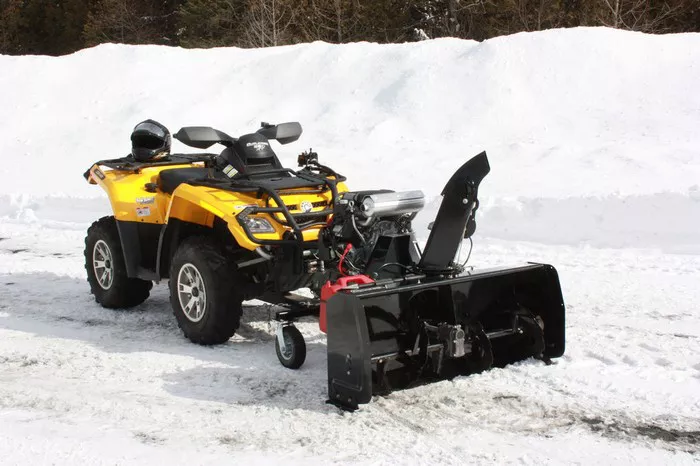Proper maintenance of your Troy-Bilt snowblower is crucial for ensuring its longevity and optimal performance during winter. One of the most important aspects of snowblower maintenance is selecting the right type of oil. Using the correct oil enhances engine efficiency, prevents excessive wear, and ensures smooth operation even in extreme cold temperatures. This article provides an in-depth guide to choosing the best oil for your Troy-Bilt snowblower, covering oil types, viscosity grades, synthetic vs. conventional oils, and maintenance tips.
Understanding Snowblower Engine Oil Requirements
Unlike automotive engines, small engines in snowblowers operate under different conditions, requiring specific types of oil. The primary factors to consider when choosing the right oil include:
Operating temperature: Cold weather affects oil viscosity, making it critical to select oil that remains fluid in freezing temperatures.
Engine type: Troy-Bilt snowblowers typically have 4-cycle (4-stroke) engines, meaning they use separate oil and fuel systems (unlike 2-stroke engines, which require oil mixed with fuel).
Manufacturer recommendations: Always refer to the Troy-Bilt owner’s manual for the recommended oil specifications.
Recommended Oil Types for Troy-Bilt Snowblowers
Troy-Bilt recommends different types of oil based on the temperature range in which the snowblower will operate. Below are the commonly used oil types and their appropriate temperature ranges:
1. 5W-30 Oil (Synthetic or Conventional)
Temperature Range: -20°F to 40°F (-29°C to 4°C)
Best For: General use in cold climates.
Advantages: Provides excellent lubrication at low temperatures, reduces engine wear, and maintains stability in variable conditions.
2. 0W-30 Synthetic Oil
Temperature Range: -40°F to 40°F (-40°C to 4°C)
Best For: Extremely cold temperatures.
Advantages: Offers superior performance in freezing conditions, reduces startup resistance, and enhances fuel efficiency.
3. 10W-30 Oil
Temperature Range: 0°F to 40°F (-18°C to 4°C)
Best For: Milder winter climates.
Advantages: Provides a balance between cold-weather fluidity and high-temperature stability but may thicken in extreme cold.
4. Synthetic vs. Conventional Oil
Synthetic oil offers better cold-weather performance, longer engine life, and reduced deposit buildup.
Conventional oil is cheaper but requires more frequent changes and does not perform as well in extremely low temperatures.
How to Check and Change the Oil in Your Troy-Bilt Snowblower
Step 1: Checking the Oil Level
Ensure the snowblower is on a level surface and the engine is cool.
Remove the dipstick from the oil fill tube and wipe it clean.
Reinsert the dipstick without screwing it in and then remove it to check the oil level.
If the oil is below the recommended level, add the appropriate oil type until it reaches the full mark.
Step 2: Changing the Oil
Warm up the Engine: Run the snowblower for a few minutes to warm the oil, making it easier to drain.
Drain the Old Oil: Place an oil drain pan under the drain plug, remove the plug, and allow the oil to fully drain.
Replace the Drain Plug: Secure the drain plug back into place.
Add Fresh Oil: Pour the recommended oil into the fill port while monitoring the dipstick.
Check the Oil Level: Ensure the oil level is correct and reinstall the dipstick securely.
Dispose of Used Oil Properly: Take the old oil to a recycling center or auto shop that accepts used oil.
How Often Should You Change the Oil?
First Change: After the first 5 hours of operation.
Routine Changes: Every 25-50 hours of use or at the beginning of each winter season.
More Frequent Changes: If operating in severe conditions, such as heavy snowfall or very cold temperatures.
Common Mistakes to Avoid
Using the Wrong Oil Viscosity: Using thick oil in freezing conditions can lead to difficult starts and poor lubrication.
Neglecting Oil Changes: Old, dirty oil can cause engine damage and reduce efficiency.
Overfilling or Underfilling Oil: Too much oil can cause leaks and engine strain, while too little oil can lead to overheating and increased wear.
Mixing Different Oil Types: Always use a single, recommended oil type to avoid performance issues.
Conclusion
Choosing the right oil for your Troy-Bilt snowblower is essential for maintaining engine performance and longevity. 5W-30 oil is the most commonly recommended option, but 0W-30 synthetic oil is best for extremely cold climates. Regular oil changes and proper maintenance will ensure your snowblower is ready to handle even the toughest winter conditions.
By following the guidelines in this article, you can keep your Troy-Bilt snowblower running efficiently, ensuring reliable operation whenever winter strikes. Always consult your owner’s manual for specific recommendations and maintenance instructions tailored to your model.

